A Brief History of
Laborers For Christ
Share
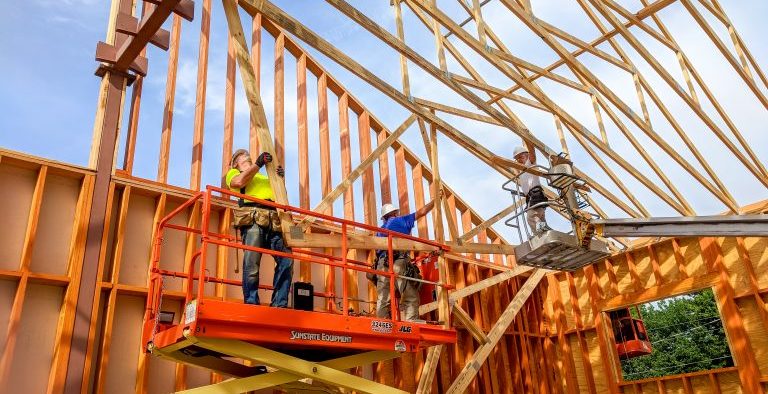
It was 1979. The finances of Good Shepherd Lutheran Church, Richfield, Utah, were hanging by a thread. They were a young church that didn’t have a facility but wanted to grow. Enter Rev. Bernard Rabbe.
Rabbe was the newly installed mission executive for what is now the LCMS Rocky Mountain District. He had a plan to help new mission plant congregations like Good Shepherd build their first permanent church home. It was a unique plan: use volunteer labor.
“I had relatives in Denver who were contractors and prevailed upon them to go to Richfield with me,” said Raabe, 98. He sounded as enthusiastic as he no doubt did in 1979 when he became the coordinator for the future laborers.
Fast forward to March 1, 1981. Raabe and a crew of volunteers dedicated Good Shepherd’s new church. That same day the laborers drove in travel trailers – the start of a trademark tradition – to break ground on the second of what would be 26 churches in the program’s first five years.
The mission-minded pioneers eventually adopted the name Laborers For Christ.
On paper, churches and schools hired this traveling army of selfless men and women to build, remodel or update LCMS ministry facilities. But at the end of the day, they had one goal. “They wanted to emphasize evangelism, that this was a spiritual ministry, about more than the building,” Raabe said.
Retirees were looking to give back
LFC expanded beyond a single district in 1985, becoming part of LCMS World Mission. It built, developed and remodeled churches and schools throughout the country. The late Clayton Melby – a Coloradan who had served as a laborer since the beginning and contributed design expertise to many of the first projects – became the second director of the program.
“For hundreds of retirees all over the country, LFC was what they were looking for – a place to serve,” said Curt Connolly. In 1991, Connolly, a former Spokane, Wash., real estate broker, became the LFC director.

The LFC roster grew – and would continue to grow over the years, to more than 1,600 men and women, from the construction trades and retired pastors, teachers, engineers, farmers, truck drivers, accountants, business owners, an airline pilot and more.
The roles laborers served also expanded. Before a project manager and crew even arrived onsite, LFC regional consultants and preconstruction coordinators helped ministries with all the preparations.
Through their dedication, laborers inspired those congregations, camps and LCMS Recognized Service Organizations they served, Connolly said. Many “would have been unable to build their new church or school without the help of LFC.”
Morning devotions and stud signings
In 2003, LFC became a ministry of Lutheran Church Extension Fund (LCEF) as another resource and service to support the church’s work.
While congregations initially contacted LFC for cost savings, “that was never the reason they said thank-you and shed tears when a project was over,” said Marcy Scholl. She served with LFC for 20 years, beginning in 2006.
Laborers built relationships and energized congregations, participating in worship and Bible study, holy graffiti signings and the church choir. In essence, they became members of that community for the length of the project.
Among LFC’s “beyond-construction” traditions:
- Morning devotions. “There’s something so special about starting the workday in God’s name,” said Carole White, LCEF district vice-president for LCMS Iowa District East and West. It unified “laborers, ministry staff and volunteers for a purpose.”
- Saturday workdays with volunteers. “Members who were never before active in their congregation and people from the community who would never step inside a church would get involved,” Scholl said.
- Stud signings. Just before they covered the studs with drywall, the laborers would host a holy graffiti celebration. This event would allow congregation members to inscribe favorite Bible verses – holy graffiti – on the studs.
- Rejoicing. Holding hands in a circle, laborers ended prayers with the joyful proclamation, “Rejoice!” “Over the years, I would hear from people that because of laborers, their congregation was still ending prayers with ‘Rejoice!'” Scholl said.
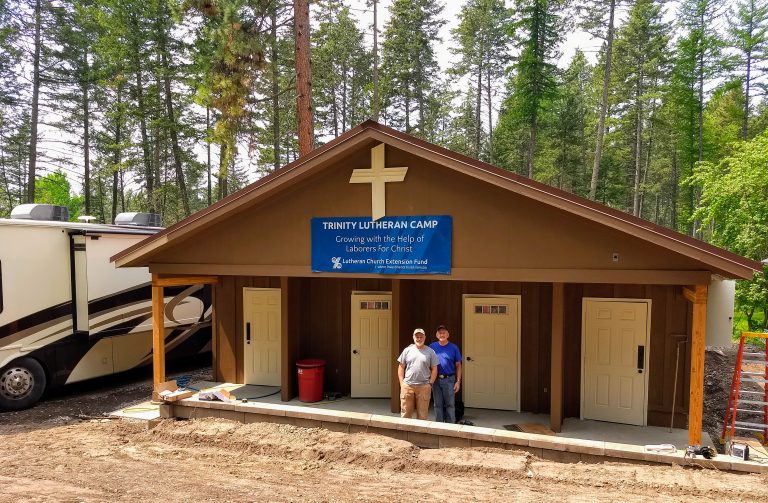
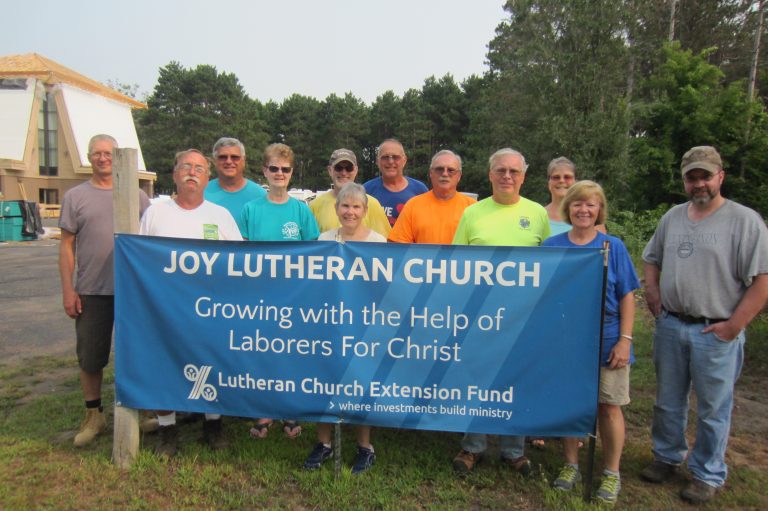
Unchanged purpose
In recent years, the range of LFC projects included an ambitious 26,000 square foot construction makeover at St. John’s Lutheran Church, Lexington, Ky., to smaller efforts like changing all the lighting to LED at Christ Lutheran Church, Augustana, Kan. And everything in between.
Building sizes and projects might have changed over the years, but not the laborers’ vision. “The work of each laborer since LFC’s beginning has been to spread the love of Christ,” said Jeff Herndon. He became program director in 2017.
“Through the churches and relationships laborers built, many now know Christ as their Savior,” Herndon said.
Steve Krause, LFC senior regional coordinator and a Minneapolis, Minn., architect, has been involved with the ministry for some 30 years. He hits the nail on the head about laborers’ legacy: “It’s their hearts for service and building God’s Kingdom. They will always have a special place in my heart.”
And the hearts of so many others.
That’s why it was with a heavy heart that LCEF decided to discontinue LFC operation on June 30, 2021 (the conclusion of LCEF’s fiscal year). The decision came after an extensive, 18-month review of the LFC program.
“This review revealed many critical issues impacting LFC operations,” said Ryan McIvor, LCEF Ministry Solutions senior vice president. “[These included] a steady decline in available opportunities, increasing logistical and regulatory challenges and a marked shift in the needs of the LCMS ministries we serve.”
Current and pending contracted LFC projects will be completed, with work possibly continuing after June 30, 2021.
“For decades, the faithful work of Laborers For Christ has blessed the church,” said Rev. Bart Day, LCEF president and CEO. “We remember and celebrate the men and women who used their gifts and abilities to expand the footprint of the church.
“As the work now comes to an end, we thank God for all they have accomplished. LCEF will consider new opportunities to serve the church in the future. As opportunities change, so must LCEF and the services we provide. We will honor the past and build the future, always growing ministry opportunities.”
LFC: By The Numbers





LFC: Through The Years
1979: Organized by LCMS Rocky Mountain District Coordinator Rev. Bernard Raabe.
1981: First LFC project completed and dedicated at Good Shepherd Lutheran Church, Richfield, Utah.
1984: Formalized under Laborers For Christ name.
1985: Adopted by LCMS World Mission.
1991: Curt Connolly becomes LFC director.
2003: Joins LCEF.
2006: Marcy Scholl, with LFC since 1996, takes program reins.
2011: NAILS introduced, young adult LFC component
2017: Jeff Herndon named LFC director.
2021: 900-plus projects completed, and countless lives touched with the Gospel.
Who Were the Laborers?
Who were these laborers who could be on vacation and pursuing hobbies but instead choose hard work? Why did they serve? Here are just a few of the many laborers who happily answered those questions.
Dale Vogt: Used his vocation to serve
Mention Laborers For Christ, and many think of the late Dale Vogt. After a long career in construction at the helm of a St. Paul, Minn., construction company, this “retiree” used his vocation to serve for 30 years, well into his 80s.
Former LFC administrator Marcy Scholl estimates Vogt had his hand in more than 300 projects in 28 states—approximately 35 percent of all LFC projects. “He was so knowledgeable and loved ministry. If he was on a project, you knew it would go smoothly.”
Longtime project manager Bob Natzke remembers Vogt as “almost a father figure, laying out the projects and timelines and always there to help if you had a question. His heart was to serve Christ.”
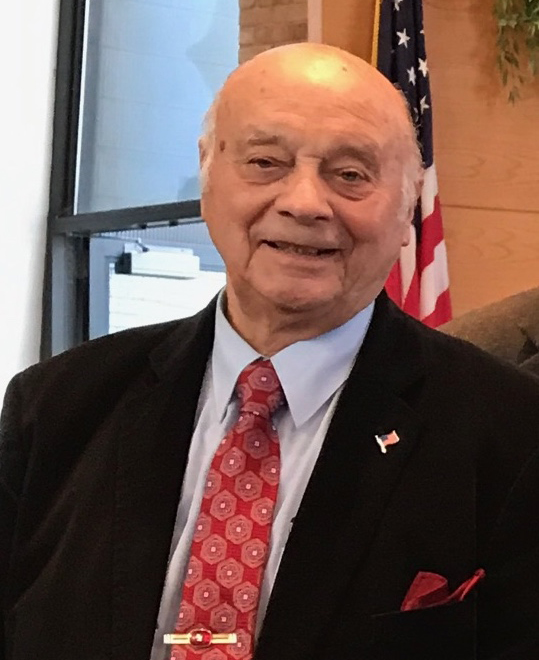
Bob Natzke: Built churches and a pet rabbit’s home.
Natzke, a Wisconsin dairy farmer and lay minister, started his third career with LFC at age 59. For 20 years, Bob and his wife, Flo, traveled coast to coast, building church homes and a home for a rabbit once.
The latter happened through a special relationship with Larry. Bob met Larry when laborers worked in Caledonia, Mich., for Bethesda Lutheran Communities, the LCMS Recognized Service Organization serving people with developmental disabilities. While tackling property repairs, the longtime project manager also built a new hutch for Larry’s beloved pet.
Although he never will forget Larry’s happiness, Bob stresses that “far more important than talking about projects is why laborers do them: for the sake of sharing the Gospel.”

Bill Terrill: Everlasting rewards
Bill Terrill had hung up his LFC project manager hard hat, but LFC pulled him back to help Christ Lutheran Church, Perry, Ga., build their first sanctuary. Much to the growing congregation’s delight, he was still serving four years later. He then returned with laborers for an encore project on their new fellowship hall.
Now retired, Terrill – a former AT &T engineer in Cartersville, Ga. – and his wife, Nancy, visit many of the churches where they served on 13 projects over 17 years. Along with the dear friends they made, the couple sees “the ministry going on in the buildings laborers built,” Bill said. “That’s when you know the rewards are everlasting.”
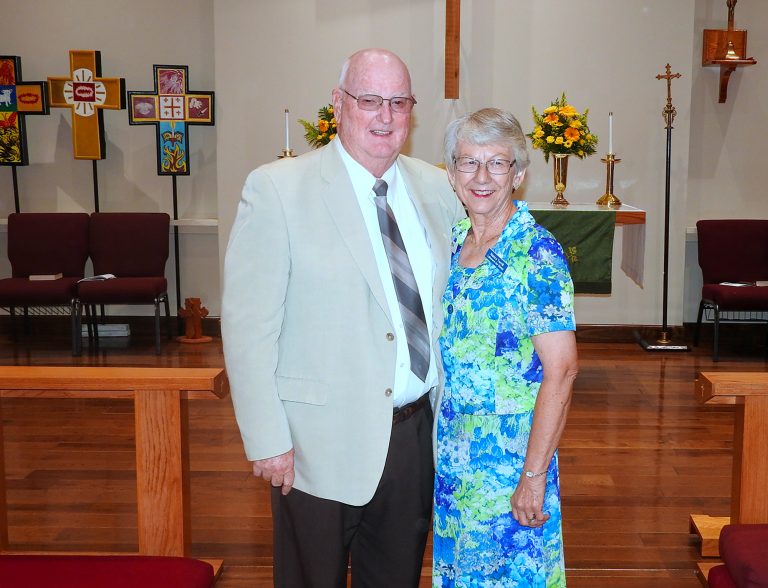
The Vandercars: Built for the church’s future
Mike and Verna Vandercar have spent a lot of time at camp, not swimming and fishing but, Verna says, “building for the future of our LCMS church.” These Indiana laborers’ hearts beat strong for Lutheran outdoor ministries, where Gospel seeds grow in campers of all ages.
The couple nurtured those seeds, building a camp education center in Iowa, a bathhouse in Montana and more. “The camp staff sees us, and the joy we have in the Lord transfers to them and trickles down to the campers – and maybe even points to a future vocation,” Verna said.
David Vandercar shares his parent’s enthusiasm. As a college student, David worked one summer alongside laborers at Lakeview Ministries in Seymour, Ind. Today, he’s executive director of the camp, where LFC crews built a new dining hall and residence buildings.
“Camp would not be what it is today if not for the many laborers who served our ministry over the last 20 years,” David said.

John Hardy: Relationships built and witness shared
As soon as John Hardy retired as a respiratory therapist, he picked up a different set of tools that he continues to use today with LFC. Since 2016, the Normal, Ill., resident has served in eight states, including assisting low-income homeowners in Fort Wayne, Ind., with needed repairs.
Along with securing loose siding or installing a new shower, laborers brought smiles to the faces of those they served. “We hopefully brightened their day and often got to share our faith,” Hardy said.
“They knew these people,” said Doug Schwartz, principal of St. Paul’s Evangelical Lutheran School, Fort Wayne, Ind. “The relationships laborers built and the witness they shared went beyond their work on those houses.”
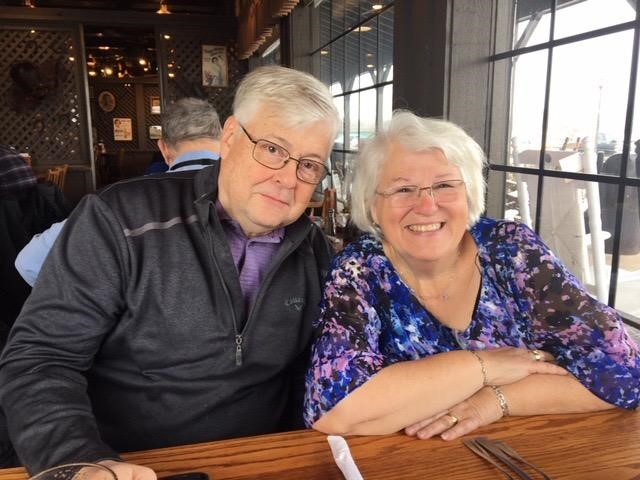
PRAYER
Heavenly Father, we thank you for the work and ministry of Laborers For Christ. For the last 40 years, thousands of selfless men and women have served the local church as construction laborers—but their work goes beyond any repair, upgrade or building. Their presence blessed and encouraged each congregation and community they visited through their witness to the love of God. That is eternal. We ask that you bless the laborers as they finish their work and that you would continue to bless the ministry of LCEF far into the future.
Amen.

